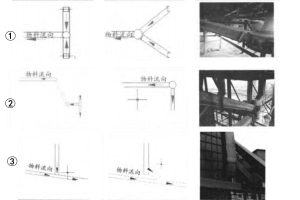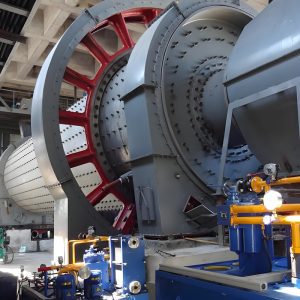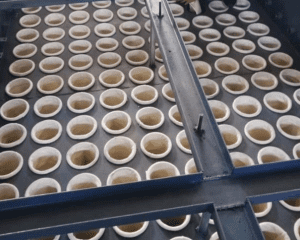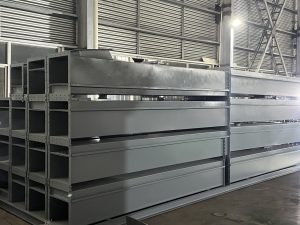Elevadores de cangilones son máquinas de transporte continuo que utilizan una serie de cangilones unidos a un elemento de tracción sin fin para elevar verticalmente los materiales. Transporta materiales a granel en dirección vertical o casi vertical. Durante el funcionamiento normal, los elevadores de cangilones pueden encontrar diversos problemas. Esto es normal, igual que a veces las personas se sienten indispuestas. Con un mantenimiento adecuado, puedes gestionar eficazmente estos problemas. Sin embargo, un mantenimiento inadecuado puede provocar daños importantes. A continuación, hablaremos de los problemas habituales de los elevadores de cangilones y de sus soluciones.
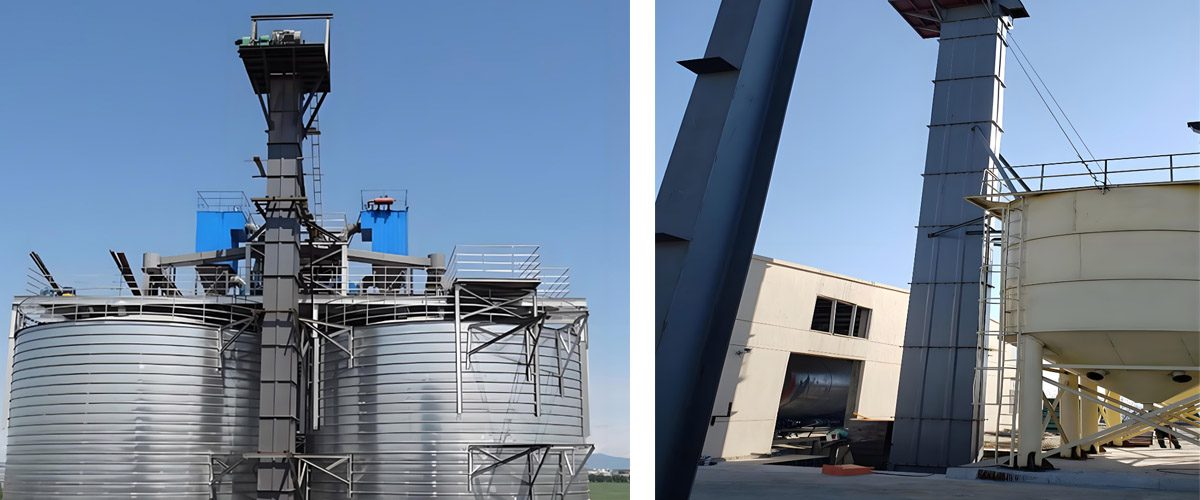
1. Ruidos inusuales durante el funcionamiento del elevador de cangilones
- Sonidos de colisión: Si la placa base choca con el cazo, ajusta el dispositivo tensor de la base para asegurarte de que la cadena está bien tensada.
- Problemas con el eje de transmisión: Si la chaveta del eje accionado está floja o el piñón está desalineado, puede hacer que el cazo choque con la carcasa. Ajusta la posición del piñón y aprieta la chaveta.
- Colisión de placas guía: Si la placa guía choca con el cazo, ajusta la posición de la placa guía.
- Material Jam: Si el material queda atrapado entre la placa guía y el cazo, aumenta el ángulo de entrada de material en la base.
- Fallos en los rodamientos: Si un cojinete falla y no puede funcionar con suavidad, sustitúyelo inmediatamente.
- Objetos extraños: Si se atascan bloques de material u otros residuos en el alojamiento, detén la máquina y elimina la obstrucción.
- Problemas con el perfil del piñón: Si los dientes del piñón están desalineados, repara o sustituye el piñón.
- Ajuste de la cadena: Si la cadena de transmisión patina, ajusta la longitud de la cadena.
- Instalación incorrecta de la carcasa: Si la carcasa no está bien instalada, ajusta su alineación vertical.
2. Vibración de la base del motor
- Averías del motor: Comprueba que el rotor del motor tiene un equilibrio estático adecuado.
- Precisión de instalación: Si encuentras poca precisión en la instalación del reductor y el motor, ajústalos en consecuencia.
- Nivelación de la base: Si la base del motor no está nivelada, reajústala para que cumpla las especificaciones.
- Errores de instalación de los piñones: Si la rueda dentada motriz está mal instalada, vuelve a instalarla.
- Corrección del perfil del piñón: Si el perfil del piñón es deficiente, corrige su forma.
- Apriete del piñón: Si el apriete del piñón de arrastre es inadecuado, vuelve a ajustarlo.
3. Fuga de polvo
- Sellos dañados: Si la junta de la brida de la carcasa está dañada, sustitúyela por una junta nueva, aplica sellador y vuelve a apretar los tornillos de la brida.
- Fuga de material: Si hay fugas de material por los huecos del cabezal o la carcasa, añade juntas o aplica sellador.
- Altura de caída excesiva: Si la altura de caída del material es demasiado grande, cambia el método de alimentación y añade un dispositivo de amortiguación.
4. Capacidad de elevación insuficiente
- Adherencia del material: Si el material se pega a los cubos o canaletas, límpialos regularmente.
- Capacidad insuficiente: Si el equipo delantero no tiene capacidad suficiente, aumenta su capacidad de producción.
- Velocidad de elevación lenta: Si la velocidad de elevación es lenta, ajusta la relación de velocidad del piñón.
- Cuestiones de medición: Si el método de medición es incorrecto, comprueba el aparato de medición y verifica la densidad del material, luego corrige el método de cálculo.
5. Descarga insuficiente de material
- Capacidad trasera insuficiente: Si el equipo trasero carece de capacidad, mejora su capacidad de producción.
- Problemas con el conducto de descarga: Si el conducto de descarga es demasiado pequeño o está en un ángulo incorrecto, corrige su ángulo.
- Limpieza de Material Adhesivo: Limpia regularmente el material adhesivo de la canaleta y los cubos.
Al resumir estos problemas comunes y sus soluciones, esperamos ayudarte a mantener eficazmente tus elevadores de cangilones y garantizar su funcionamiento normal. Si tienes alguna otra pregunta, no dudes en consúltanos!

